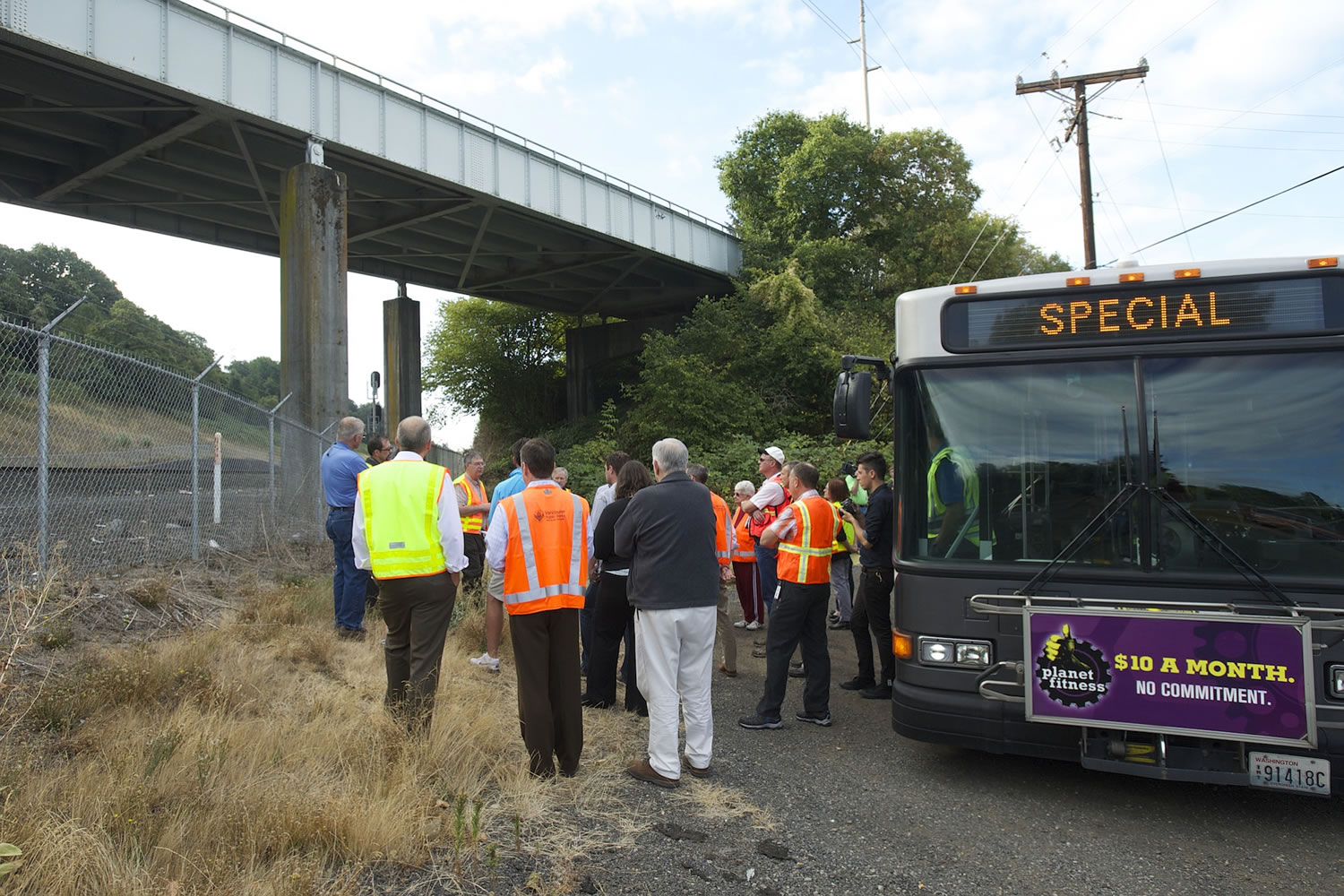As the council piled off the bus, the answer was apparent. Big rigs that take 78th Street have to cross the narrow Fruit Valley Road bridge to get to the industrial areas. Aside from the fact truck drivers don’t like the 6 percent grade on the county-owned 78th Street, overweight tractor-trailers aren’t allowed on the “functionally obsolete” bridge.
A new bridge would cost at least $10 million, said Bill Whitcomb, an asset manager in the city’s public works department, adding the project would be complex because of environmental requirements triggered by Burnt Bridge Creek. For now, the bridge, which does not meet current seismic requirements, can likely last another 20 years.
So will a replacement rate high on a priority list? Doubtful, Holmes said.
From the city’s west side, the tour headed east to 192nd Avenue. In between, highlights included the former Kaiser shipyard site along the Columbia River that holds potentially lucrative industrial space but lacks sufficient access roads. The bus bumped along Old Evergreen Highway, which draws frequent complaints from residents. Brian Carlson, the city’s director of public works, said rebuilding the concrete road would cost as much as $40 million, but the city has been trying different techniques to achieve a smoother surface.
As the bus turned north onto Southeast 192nd Avenue from state Highway 14, Chad Eiken, Vancouver’s director of community and economic development, talked about a mixed-use development, Riverview Gateway, scheduled to be built in the area.



